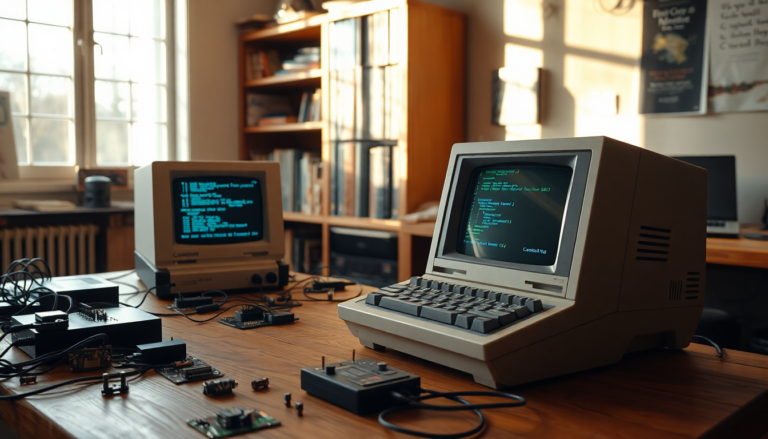Argomenti trattati
Creating a game that effortlessly runs on both vintage and modern computers isn’t just a technical feat; it’s a passionate journey filled with challenges and discoveries. In this narrative, we’ll dive into the development of a roguelike dungeon crawler designed to be compatible with a variety of systems, including the beloved Commodore 64 and PET. What hurdles did the developers face, and how did they overcome them? Let’s find out.
Setting the Stage
The goal of crafting a game that spans multiple platforms isn’t solely about nostalgia—it’s about reviving old machines and showcasing their potential. For many enthusiasts, vintage computer collections evoke cherished memories, and providing playable experiences transforms these relics into lively gaming devices. Isn’t it exciting to think about bringing these classic systems back to life?
The development kicked off with TRSE, a versatile environment that caters to various vintage systems. The initial vision was to create a text-based roguelike, compiling code specifically tailored for each target machine. However, as limitations became apparent, the team pivoted towards programming in C. Why C? Because it offers widespread compiler availability across a wide range of hardware—from calculators to mainframes. This strategic shift aimed to create a universal codebase adaptable to various systems.
One of the key techniques employed in this ambitious project was **conditional compilation**. This approach allows developers to include or exclude segments of code based on the target system, ensuring a customized experience for different hardware. Yet, the complexity of managing multiple platforms quickly became clear. How do you balance the effort of supporting numerous systems against the practicality of focusing on just one?
Supporting a variety of machines requires a deep understanding of their specific capabilities and limitations. The decision to narrow the focus to systems with at least 64K RAM was strategic. This choice streamlines development and minimizes potential issues that often arise from stark differences in system architecture. It’s all about working smarter, not harder.
A significant breakthrough came with the introduction of a **procedurally generated map system**. This innovation not only enhances gameplay by offering unique experiences in each session but also reduces the burden of manually creating maps. Though it does consume some memory, the map generation time is surprisingly quick, resulting in minimal disruption during gameplay. Isn’t it fascinating how technology can create infinite possibilities?
Shifting from Text to Graphics
The initial version of the game stuck to the traditional text-based format typical of roguelike dungeon crawlers. However, the differences between machines, particularly the number of text columns on the PET, sparked discussions about graphical enhancements. While incorporating graphics adds complexity, it’s crucial for making the game visually appealing. Who doesn’t love a good graphical upgrade?
With these intricacies in mind, the decision was made to prioritize the Commodore 64 as the primary development platform. By honing the game on this well-supported system, the foundation can be established for adapting it to others with different capabilities. This approach helps minimize the risks of code bloat and those elusive bugs that often plague multi-platform projects.
Ultimately, creating games that operate on both vintage and modern systems requires careful balance. While the appeal of broad compatibility is enticing, the technical realities of diverse hardware often call for a more focused approach. Starting with a single, robust platform allows for a more controlled development process, which in turn enables the delivery of a fun and engaging gaming experience.
Looking Ahead: Future Aspirations
The journey of crafting a roguelike game for vintage computers is marked by creativity, problem-solving, and deep respect for computing history. By embracing the unique qualities of each system and understanding their specific nuances, developers can create engaging experiences that honor the spirit of retro gaming.
As development continues, the vision remains crystal clear: to produce a game that not only runs on various systems but also celebrates the rich tapestry of computing history. Gradually adapting to other platforms will follow as the core game reaches its polished state, ensuring that the final product serves as a fitting tribute to the world of vintage computing. Ready to join the adventure?

